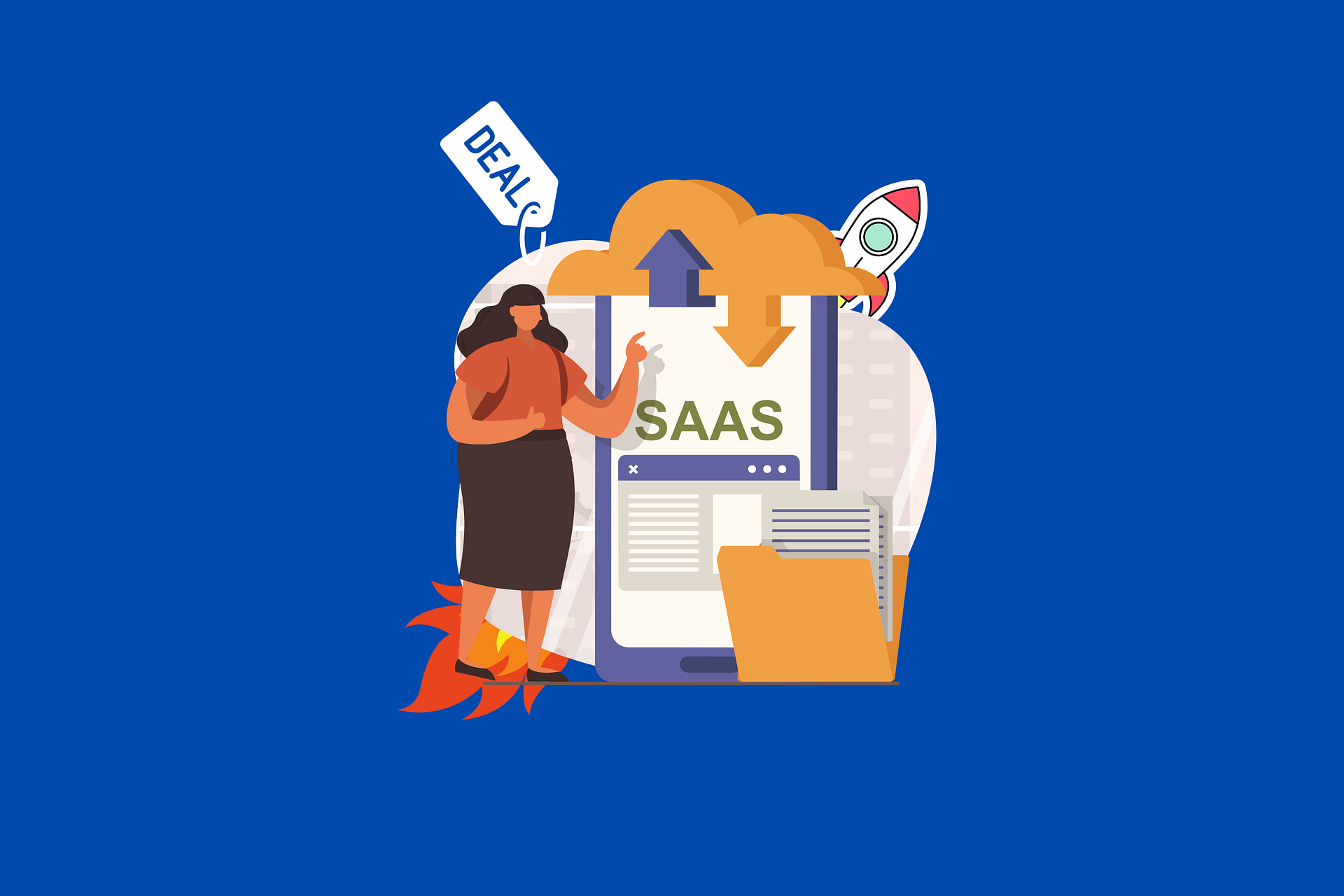Cost reduction is another critical reason why switching from traditional on-premise software to a cloud-based app can be highly beneficial to your company.
Digital transformation might sound like a buzzword, but this shift from traditional, analog on-premise solutions to cloud services ushered an entirely new approach to various aspects of running a business.
According to stats, the global SaaS market size was valued at $152 billion in 2021 and is expected to reach $208 billion in 2023. Although the concept of SaaS, the key enabler of digital transformation, has been around for 20 years, some small business owners still aren’t sure whether this technology is something they could benefit from.
Here’s what you should know about SaaS and how this software distribution model can help your business.
What is SaaS?
Software as a service, or SaaS, is an on-demand, cloud-based delivery model. In other words, you subscribe to an IT service, such as an app or software, and access it remotely instead of purchasing and downloading it locally to your device.
This kind of software is built on shared infrastructure in the cloud and is deployed via an internet connection.
Early SaaS solutions lacked interoperability and flexibility and were built to address a single pain point. All these issues have been fixed over the past decade, and modern SaaS platforms are indispensable to many industries, including finance, HR, supply chain, commerce, marketing, and sales. Thanks to its ability to span across different fields, SaaS startups offering powerful solutions have mushroomed, and you can greatly benefit from this growth.
Here are some of the most important benefits of implementing SaaS.
Reduced Costs
There are several reasons the SaaS model is cost-effective.
First of all, there are no huge upfront costs since such services typically operate on a pay-as-you-go model. Traditional software requires purchase, installation, upgrade, and maintenance costs, so the expenses quickly add up. The SaaS provider owns the entire infrastructure and environment, and the costs are split among the end users.
Besides that, you will only pay for what you use, which allows many startups and SMBs to get access to services they otherwise wouldn’t be able to afford due to the high prices of licensing.
Scalability and Flexibility
As your business expands, your IT needs grow. The SaaS model allows you to scale your use up and down only by opting for a different subscription plan. In other words, if you want to add more users or need a higher server capacity, it can be done within the same day hassle-free.
When talking about the flexibility of SaaS solutions, it’s worth mentioning that they integrate seamlessly with other cloud-based software. Compatibility is frequently an issue with on-site solutions, but cloud-based apps rely on API to communicate easily with each other and pass data back and forth.
Therefore, you don’t have to worry about switching vendors or purchasing additional apps.
No Maintenance
Unlike traditional software that requires maintenance and fixing different technical issues, SaaS is much more user-friendly. Since the service provider owns the infrastructure, maintenance and upgrades are their responsibility.
So, users don’t have to think about updates, upgrades, and security patches — they always have access to the latest version of the software by default.
By being practically maintenance-free for users, SaaS apps also allow for better time management. They minimize the extra hours spent upgrading or fixing potential issues.
Guaranteed Performance Levels

All SaaS providers have a Service Level Agreement, which defines guaranteed performance levels. The industry standard for uptime is between 99.5% and 99.9%.
When it comes to backing your data residing in the SaaS solution, it’s important to mention that it’s still your responsibility. However, SaaS backup software makes it infinitely easier than that’s the case with on-premise solutions. Using cloud-to-cloud backup will offer you another layer of security since it will automatically copy your data between different cloud drives and store them in another off-site location. This way, you’ll be able to prevent any data loss or even user error.
Ease of Use
Most SaaS solutions are built with the end user in mind, which is why they’re intuitive and easy to learn.
Apart from achieving proficiency relatively quickly, there’s another added benefit of this ease of use — you won’t have to hire an IT person responsible for managing software and ensuring everything is working properly. So, you can save more and allocate that money to something else.
Final Thoughts
SaaS solutions are a great boon to SMBs since their flexibility and ease of use facilitate daily operations and streamline different processes. Cost reduction is another critical reason why switching from traditional on-premise software to a cloud-based app can be highly beneficial to your company.


Join the conversation!